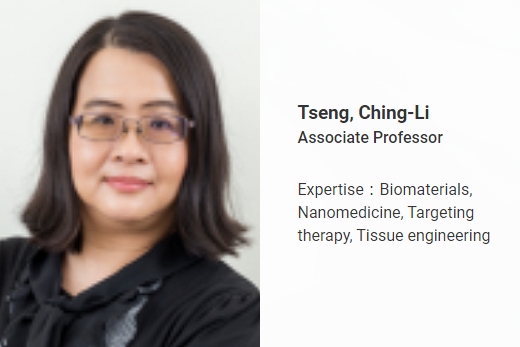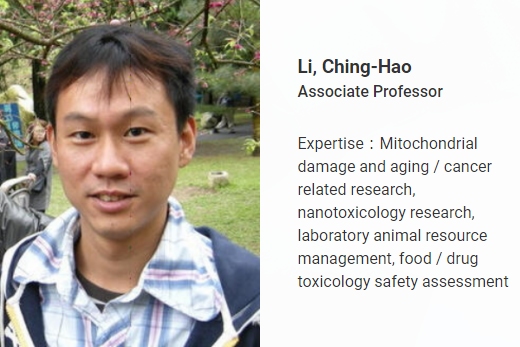Retinopathy Team
RETINOPATHY TEAM








The World Health Organization has released its first “World Vision Report” in recent years, pointing out that population aging, lifestyle changes, insufficient care for eye diseases, and lack of drugs are the main factors driving the increasing number of people with visual impairments around the world. In 2020, the global eye drug market will be approximately 36.7 billion US dollars and is expected to increase to 60 billion US dollars by 2028. Currently, it is estimated that 110 million people worldwide have eye-related diseases of varying severity. It can be seen that the increasing number of eye diseases will be a major disease that cannot be ignored by humans in the future.
The main research directions of this retina team include retina-related macular degeneration in the elderly, diabetes-induced retinopathy, glaucoma, and its pathogenic mechanisms and risk factors. In addition, there are cataracts, inflammatory eye diseases, eye and brain diseases, as well as the development of biomarkers for early diagnosis of eye and brain related diseases and dosage form improvements to solve drug permeability and malabsorption.
Our team includes clinicians, physiology, pharmacology, toxicology, pharmacy, and basic neuroscience researchers. We have received subsidies from the Ministry of Science and Technology, including integrated and multiple individual projects, which show that our professional and research capabilities are outstanding and recognized.
We look forward to integrating the energy of various research teams to explore more unknown pathogenic mechanisms of eye diseases and to develop new therapeutic drugs for the greatest needs of human eye diseases.
Publications:
1. Wu LH, Cheng YW, Lin FL, Hsu KC, Wang MH, Yen JL, Wang TJ, Lin TE, Liu YC, Huang W-J, Hsiao G, (2024) A novel HDAC8 inhibitor H7E exerts retinoprotective effects against glaucomatous injury via ameliorating aberrant Müller glia activation and oxidative stress. Biomed Pharmacother. (174):116538.
2. Lin FL, Cheng YW*, Chen LH, Ho JD, Yen JL, Wang MH, Lee TH*, Hsiao G*, (2023). Retinal protection by fungal product Theissen lactone B in a sodium iodate-induced AMD model through targeting retinal pigment epithelial matrix metalloproteinase-9 and microglia activity. Biomedicine & Pharmacotherapy. (158):114138-114148.
3. Chan YJ, Hsiao G, Wan WH, Tsa CH, Kang JJ, Lee YC, Fang TC, Cheng YW, Li CH, (2023). Blue light exposure collapses the inner blood-retinal barrier by accelerating endothelial CLDN5 degradation through the disturbance of GNAZ and the activation of ADAM17. Fluids and Barriers of the CNS. (20):1-20.
4. Fitriana I, Wu GH, Hsu TJ, Chan YJ, Li CH, Lee CC, Hsiao G, Cheng YW, (2023). Activation of aryl hydrocarbon receptor by azatyrosine-phenylbutyric hydroxyamide inhibits progression of diabetic retinopathy mice. Biochemical Pharmacology. (1):1-13.
5. Chan YJ, Liao PL, Tsai CH, Cheng YW, Lin FL, Ho JD, Chen CY, Li CH, (2021). Titanium dioxide nanoparticles impair the inner blood-retinal barrier and retinal electrophysiology through rapid ADAM17activation and claudin-5 degradation. Particle and Fibre Toxicology. (18):1-16.
6. Hsu TJ, Nepali, K, Tsai CH, Lin FL, Hsiao G, Lai, MJ; Cheng YW, (2021). The HDAC/HSP90 Inhibitor G570 Attenuated Blue Light-Induced Cell Migration in RPE Cells and Neovascularization in Mice through Decreased VEGF Production. Molecules. (26):4359–4378.
7. Tsai CH, Fang TC, Liao PL, Liao JW, Chan YJ, Cheng YW, Li CH, (2020). The Powdered Root of Eurycoma longifolia Jack Improves Beta-Cell Number and Pancreatic Islet Performance through PDX1 Induction and Shows Antihyperglycemic Activity in db/db Mice. Nutrients. (12):1-16.
8. Sekar P, Hsiao G, Chen YS, Lin WW, Chan CM, (2023). P2X7 Is Involved in the Mouse Retinal Degeneration via the Coordinated Actions in Different Retinal Cell Types. Antioxidants. (12).
9. Hsueh PJ, Wang MH, Hsiao CJ, Chen CK, Lin FL, 「Huang SH, Yen JL, Tsai PH, Kuo YH, Hsiao G」, (2021).Ergosta-7,9(11),22-trien-3-ol Alleviates Intracerebral Hemorrhage-Induced Brain Injury and BV-2 Microglial Activation. Molecules. (26):1-18.
10. Choo Jackson, Liao CH, Tseng CL, Chen JL, Cheng HC, Liang CL「Hank Juo SH」, (2023).Inhibition of microRNA-328 Increases Ocular Mucin Expression and Conjunctival Goblet Cells. Biomedicines. (11):1-11.
11. Chu YA, Fang HW, Wu YY, Tang YJ, Haieh EH, She YZ「Chang CY,Lin IC,Chen YJ, Liu GS, Tseng CL」, (2023).Functional Peptide-Loaded Gelatin Nanoparticles as Eyedrops for Cornea Neovascularization Treatment. International Journal of Nanomedicine. Int J Nanomedicine. 23, (18):1413-1431.
12. Wang JH, Tseng CL, Lin FL, Chen JY, Hsieh EH, Lama S, Chuang YF, Kumar S, Zhu L, McGuinness MY, Hernandez J, Tu L, Wang PY, Liu GS, (2022).Topical application of TAK1 inhibitor encapsulated by gelatin particle alleviates corneal neovascularization. Theranostics. (12):657-674.
13. Liao CH, Tseng CL, Shiun-LL, Chung-LL, Suh-HJ, (2022). MicroRNA Therapy for Dry Eye Disease. Journal of Ocular Pharmacology and Therapeutic. (38):125-132.
14. Wang JH, Lin FL, Chen JY, Zhu LX, Chuang YF, Tu LL, Ma CK, Ling DM, Hewitt AW, Tseng CL, Shah MH, Bui BV, Wijngaarden P van, Dusting G. J., Wang PY, Liu GS., (2022). TAK1 blockade as a therapy for retinal neovascularization. Pharmacol Res. (187):1-14.
15. Tsai CH, Hoang Le Ngoc, Lin CC, Pan LC, Wu CL, Lin IC, Wang PY, Tseng CL*, (2022). Evaluation of Topical and Subconjunctival Injection of Hyaluronic Acid-Coated Nanoparticles for Drug Delivery to Posterior Eye. Pharmaceutics. (14):1-17.
16. Lin IC, Wang YC, YZ Chen YZ, Tang YJ, Chen KH, Tseng CL, (2022). Dry eye syndrome model established in rabbits via mitomycin C injection in the lacrimal gland. Taiwan Journal of Ophthalmology. Taiwan J Ophthalmol. 4;13(1):34-42.